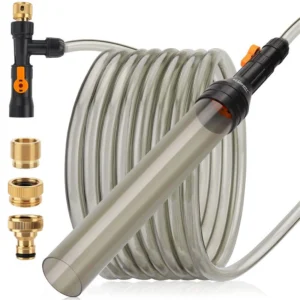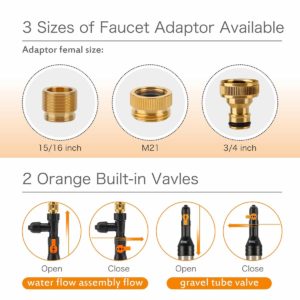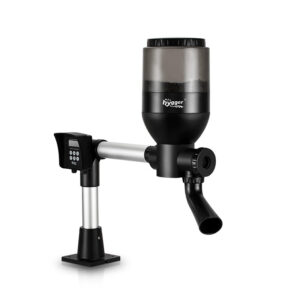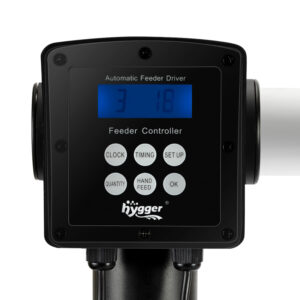Care Of Pond Plants Over Winter
Aquatic pond plants are beneficial for your ponds. The plants can be hiding places for fish and other creatures in your pond, while they also make sense in improving oxygen levels and maintaining great water quality. Additionally, some pond plants block out the light, which would limit algae growth. However, can pond plants survive in the winter? And how to winterize pond plants? Next in this article, let’s explore further aquatic pond plants. After reading, you will get some ideas.
Content Table
Plants for ponds
Pond plants are categorized into three types, floating, marginal, and submerged plants. Floating plants grow on the water surface without soil. And they absorb nutrients from the water. Concerning marginal plants, their roots are submerged in the water, while the rest parts are above the water. Moreover, submerged plants are immersed in the water completely. Usually, they grow at the bottom of your pond.
Take Koi ponds as an example, plants, such as water smartweed, water lotus, and water clover, are excellent alternatives. Next, we will list some specific aquatic plants for ponds.
Floating plants
- Hornwort (one hardy plant)
- Water lily
- Water chestnut
- Floating water moss
- Mosquito Fern (ideal for beginners)
- Frogbit (fast-growing pond plants)
- Duckweed (fast-growing pond plants)
- Water lettuce (easy maintenance)
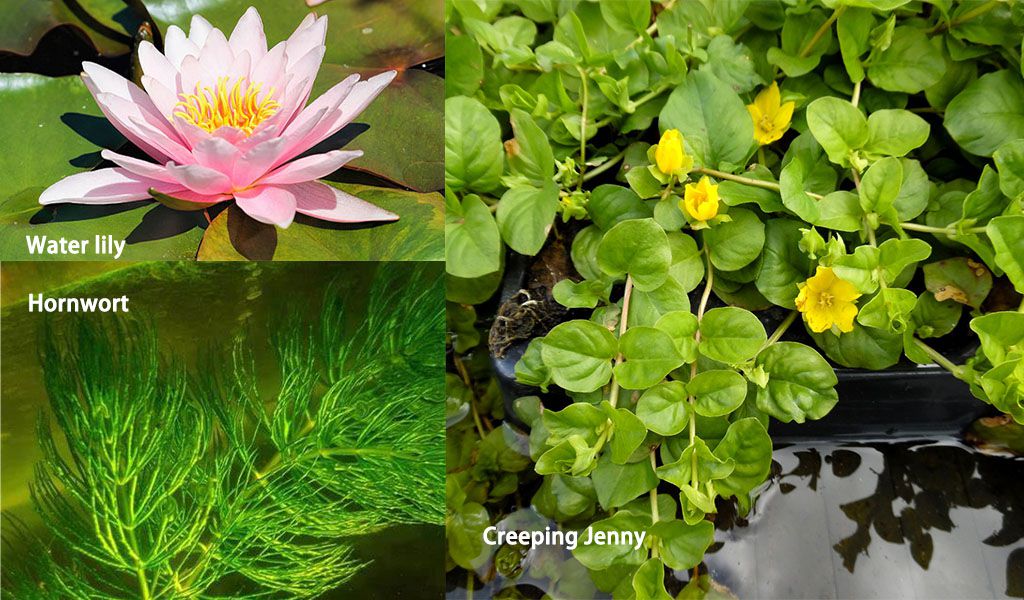
Marginal plants
- Northern blue flag
- Marsh marigolds
- Creeping Jenny (ideal for beginners)
- Blue Iris (pond flower)
- Corkscrew rush (easy maintenance)
Submerged plants
- Hornwort (one hardy plant)
- Water soldier (one hardy plant)
- Vallisneria (ideal for beginners)
- Mint charlie
- Rotala (fast-growing pond plant)
- Pickerel (pond flower)
- Bladderwort
Keep pond plants safe
In general, most pond plants fancy basking. Therefore, it is recommended to keep them under sunlight for about 6–8 hours each day. Additionally, you should remove dead, or excess leaves. In this part, we will talk about pond plant maintenance.
Floating plants
The floating plants can be low-maintenance ones. However, the coverage rate of floating plants should not be more than 50 percent of the water surface. If there are too many floating plants, you should remove some. Otherwise, they will block out too much light, which is not good for fish, plants, and other creatures in the pond. Also, one tip, you should not add floating plants to your pond if the water temperature is still cold. Moreover, it is not feasible to add floating plants to ponds with a skimmer.
Marginal plants
Usually, you do not need to fertilize the marginal plants unless they are kept in pots. As they can gain nutrients from the pond. In winter, you should prune the plants back to 2–3 inches above the water surface.
Submerged plants
Submerged plants are also named “oxygenating” plants. The excess debris and nutrients in the pond can be food and nutrients for submerged plants. Consequently, it is no need to fertilize them. Besides that, the submerged plants should grow under the water’s surface. As a result, if the plants grow up to the water surface, you should trim them.
Pond plants that survive the winter
In this segment, we will share some pond plants that can survive in winter.
Hornwort
With a long green stem, it has branches every inch. The green leaves are thin, and their shapes are like needles. Hornwort can be planted in the substrate, or just float on the water’s surface. As a floating plant, it can provide hiding places and limit algae growth. Because it can block out light. Moreover, the ideal water temperature and pH level respectively are 59-86℉ and 6.0-7.5.
Water soldier
Water soldier is one kind of perennial plant. A female water soldier can produce a flower, but a male one can produce clusters of white flowers. During cold days, water soldiers would be covered with a level of calcium carbonate, and sink to the pond bottom.
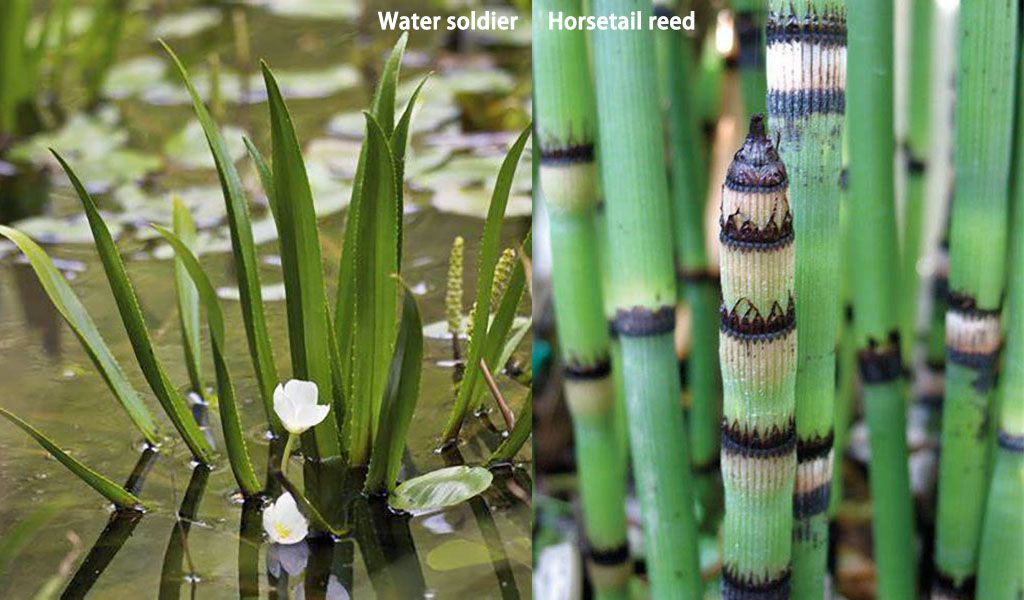
Horsetail reed
Horsetail reed should be placed in pond margins and planted on the substrate. Besides, it needs sufficient light and space to grow. Because Horsetail reed’s stems are tall. There are small leaves and dark rings on the stem. The rings are also named nodes.
Winterizing water plants
For pond fish, we can install aquarium heaters or auto fish feeder to help them over the winter, but for pond plants, how to winterize the water plant? Exactly, it is determined by the plant species. Most hardy plants can tolerate the water temperature in winter, so these kinds of plants can be just kept in ponds. Nonetheless, some plants can not stand the cold water temp. Hence, these plants should be removed from the ponds. Next, we will discuss some methods to winterize the water plants in ponds. Usually, you should not feed your pond plants since September. Only by so, plants can approach dormancy properly.
Specifically, floating and tropical plants may face freezing on the water’s surface. Thus, it is necessary to remove them from your pond. On the other side, hardy plants can remain in your pond during winter. However, you should trim the dead leaves and leaves above the water surface. Leaving the plants in your pond would help to remove excess debris. Additionally, some hardy plants should be placed deeper in the pond, like Lotus.
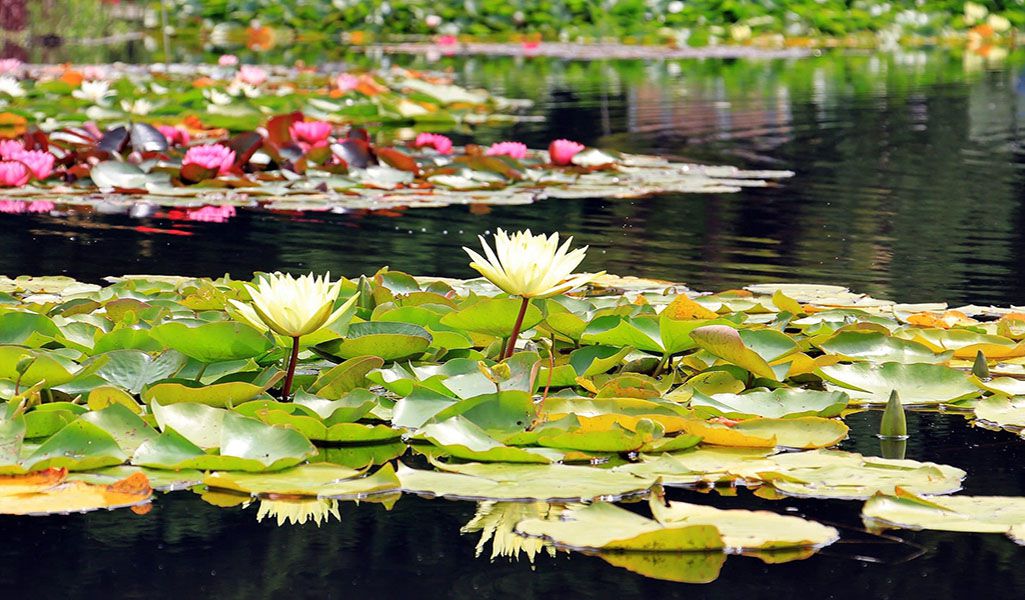
Also, provided that your pond is less than 36 inches in depth, it is better to trim dead leaves and remove most water plants, then keep them indoors. But do not forget to water them to keep the roots moist. And you can move them back to your pond when the spring comes.
On the other hand, to keep pond plants alive during the winter and create a great living environment for plants, koi fish, or other creatures in your pond, you should add something to your pond, like a net, a heater, and a de-icer. A de-icer for instance can avoid frozen water surfaces. Furthermore, adding beneficial bacteria specialized for pond winterization. It plays a role in preventing dead organic materials accumulation and maintaining clean water and great water quality.
Reminder
After reading, have you got a deeper understanding of pond plants and methods to winterize the pond plants? People would wear more warm clothes in winter. Pond plants are the same, they also need some protective action against the cold weather. For another thing, what should you get for a pond? For example, a Koi pond? Go to Things to Consider Before Starting a Koi Fish Pond to learn more. Finally, thanks for your reading.

